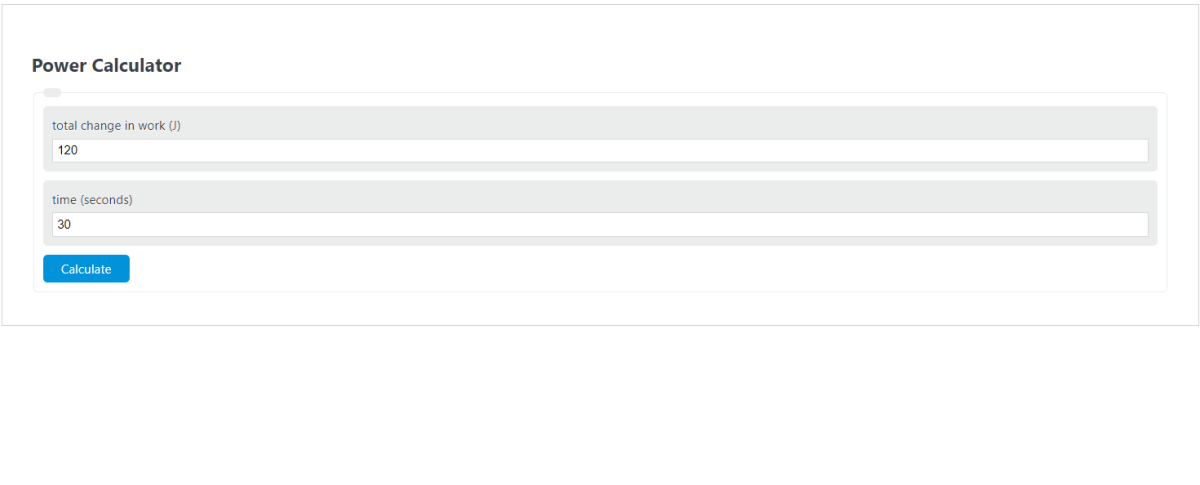Enter the total change in work (J) and the time (seconds) into the calculator to determine the Power.
- All Electrical Calculators
- Output Power Calculator
- Centrifugal Compressor Power Calculator
- BLDC Motor Power Calculator
Power Formula
The following formula is used to calculate the Power.
P = dW / dT
- Where P is the Power (watts)
- dW is the total change in work (J)
- dT is the time (seconds)
To calculate power, divide the change in work by the change in time.
How to Calculate Power?
The following two example problems outline how to calculate the Power.
Example Problem #1:
- First, determine the total change in work (J). In this example, the total change in work (J) is measured to be 400.
- Next, determine the time (seconds). For this problem, the time (seconds) is calculated to be 30.
- Finally, calculate the Power using the formula above:
P = dW / dT
Inserting the values from above and solving the equation with the imputed values gives:
P = 400 / 30 = 13.33 (watts)
FAQ
What is the unit of measurement for power in the context of this calculation?
Power is measured in watts (W) in the context of this calculation. It is the standard unit of power in the International System of Units (SI).
Can this formula be used to calculate power for any type of work?
Yes, this formula can be used to calculate power for any type of work where there is a measurable change in work (energy) over time. It applies to mechanical, electrical, and other forms of energy transfer.
How does the time interval affect the calculation of power?
The time interval (dT) directly affects the calculation of power. A shorter time interval for the same amount of work done (dW) results in a higher power output, indicating more work done per unit of time. Conversely, a longer time interval for the same amount of work results in lower power output.
